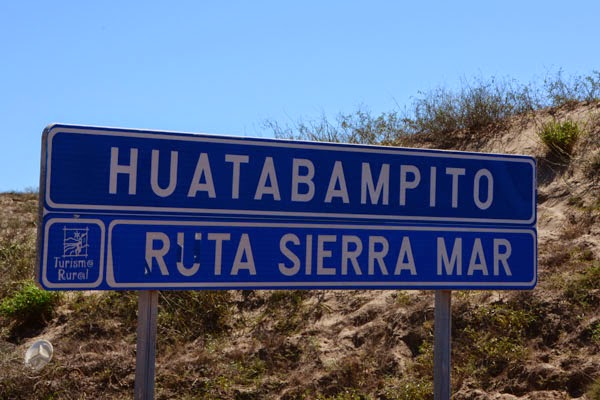Back in those times, over 5000 people lived in Aduana; today,
there are only about 400 inhabitants.
The church in the plaza, Nuestra Señora
de la Balvanera or Our Lady of Balvanera, was built after a Mayo Indian vision
of a woman on top of a cactus. When they
piled up rocks to rescue her, a rich vein of silver appeared which was
considered a miracle and started the silver boom here.
Today when you visit the church, look on the
right side wall outside and you'll see a large thriving cactus growing out of
the wall about 12 feet up! On November
12th of each year, there is a procession here of Mayo Indians and a celebration
continues for 10 days to celebrate the miracle of La Aduana!
Some of the mines are in hiking distance and the former
smelter is across the river with its stack still standing and pieces of slag
from the smelter all over the ground.
Ruins of former houses, current homes including several upscale homes, a
small store, a B&B and two women's crafts co-ops are what you'll see in a
drive to the town plaza. The church, of
course, is the highlight. The craft co-ops
are well worth a visit with many unique items like animals made from soda or
beer bottle caps and much more!
On 2/26/2015, back on the Alamos highway headed west, we were
now on the Ruta Sierra Mar, the highway from the mountains to the
sea!
Our destination is Huatabampito,
(Hwhat-a-bam-pito) a small village on the Sea of Cortes, southwest of Navojoa
and about 30 minutes south of the big town of Huatabampo. This drive takes you through the rich
agricultural areas of Sonora where wheat, corn, tomatoes and many other crops are
grown on huge irrigated farms.
This is
also the homelands of the thriving Yaqui and Mayo Indians. It's about a 2-1/2 hour drive to get to the
beaches of Huatabampito.
The village
consists of a police post, a small store, an old fish processing plant, many
upscale homes overlooking the beaches and the combination Miramar restaurant,
hotel and RV Park. We've stayed at the
Miramar RV Park previously and enjoyed the solitude and beauty of the beach and
ocean as well as the good food at the restaurant.
The beach is one of several we've been to
that have what appear to be grains of gold in the sand in or near the
surf. Near sunset, this effect is
spectacular with trails of gold! Small
mounds in the tidal zone are the homes of ghost shrimp, clams and fiddler
crabs.
We initially drove down the single dirt road of town that
parallels the beach about 1-1/2 miles to see if there was anything new. We only saw some new home construction or
rebuilding since this place has been hit by hurricanes coming over from Baja
since it is about the same southerly distance as Loreto in Baja.
The sunsets here are beautiful and there are flights of pelicans
skimming the water, frigate birds, lots of gulls and small “peeps” like
sanderlings.
We had planned
to stay here and relax and walk on the beach for two days but it became windy
and we decided to only spend one night.
On 2/27 we headed out at 8AM for the nearby town of Yávaros, a small fishing
village on a large estuary, Bahia de Yávaros,
off the Sea of Cortes. There is a very
large fish processing plant here that supports the village. There are docks and
support facilities for the large fish boats that work far out in the Sea of
Cortes.
A recently paved road circles
one side of the bay with houses on the right side and fishing pangas and fish cleaning stations on
the water side. What makes this place so
spectacular is the variety of birds present and the huge numbers of birds! There are brown pelicans everywhere,
seeking an easy meal, sitting on or
mobbing pangas where the fishermen are pulling the fish out of their nets and
everywhere on shore by the fish cleaning stations!  |
| Willets, White Ibis and Yellow-crowned Night Heron |
And of course, the human drama of hundreds of
men and women and kids working on cleaning fish, going out in the pangas and
working on nets. We used our Sprinter
van as a blind and drove on the (wrong side) water side of the street to take
close photographs of the people, the fishermen and the birds everywhere.
An Alamos-based naturalist takes people out in pangas on
ecotourism tours here in the bay to see the birds including blue footed
boobies, which are a real treat! None of
the fishermen offered us a boat ride so we didn't get that viewpoint this trip,
but I'm sure it could be arranged.
We
spent two hours here documenting the scene and always find it exciting, even
though we've been here in the past. From
Yávaros, we headed
north back to the popular beach town of San Carlos!




















No comments:
Post a Comment